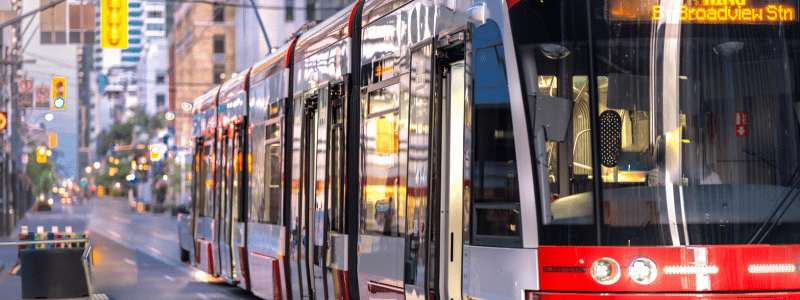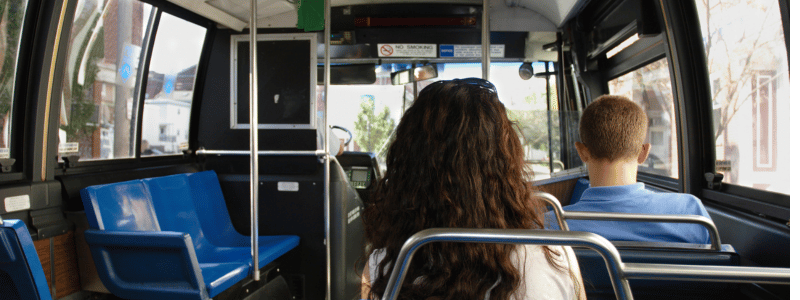Public transportation plays an important role in daily life for many Oregonians. Whether you’re commuting to work on a TriMet bus, riding the MAX light rail through Portland, or using a city-run shuttle, these services are meant to be safe and efficient. But when something goes wrong like a bus crash or a slip and fall while boarding, victims are often left confused, injured, and unsure of their rights.
Injuries involving public transportation can be more complicated than standard car accidents. Not only are you dealing with the trauma of being hurt, but the legal process for filing a claim against a government-operated entity like TriMet or another transit authority is full of unique rules and strict deadlines.
That’s why speaking with a public transport accident lawyer in Oregon is a smart move. In this article, we’ll cover the most common types of public transit accidents, who might be liable, Oregon-specific laws that affect your case, and the steps you should take to protect your rights after an injury.
Also Read:
- Staying Safe on Portland’s Roads:
- 10 Reasons Why You Should Hire an Injury Attorney
- Top Car Crash Lawyers
Common Types of Public Transport Accidents in Oregon
Public transit accidents aren’t limited to high-speed collisions. In fact, many claims arise from less obvious events that still cause significant injury. Here are some of the most common public transportation-related accidents in Oregon:
1. Bus Accidents
- Collisions involving city buses and private vehicles
- Sudden stops that throw passengers from their seats
- Rear-end crashes while passengers are boarding or exiting
2. MAX Light Rail Incidents
- Derailments
- Pedestrian accidents at crossings
- Slips, trips, and falls on poorly maintained platforms
3. Onboard Injuries
- Passengers falling due to abrupt stops or faulty handrails
- Lack of seatbelts leading to severe injuries during minor impacts
4. Boarding/Exiting Accidents
- Tripping on uneven steps or platforms
- Doors closing on passengers
- Injuries caused by driver negligence while pulling away
Public transportation providers have a duty to ensure the safety of their passengers. When they fail to meet that duty, they may be held accountable but only if the proper legal steps are followed.
Who’s Liable in a Public Transit Accident?
One of the biggest challenges in a public transport injury case is figuring out who is legally responsible. Unlike typical car accidents, there could be multiple parties at fault, including:
- The public entity (e.g., TriMet, LTD, or other regional authorities)
- The bus or light rail operator (especially if driving negligently or under the influence)
- Another driver (in multi-vehicle collisions)
- Private contractors or maintenance providers
- Equipment manufacturers (if a vehicle defect caused the accident)
An experienced public transport accident lawyer will conduct a thorough investigation to determine where the responsibility lies and build a strong claim against the correct parties.
Oregon Laws Affecting Public Transport Injury Claims
If you’re injured on public transit in Oregon, your legal process won’t follow the same timeline or rules as a regular car accident claim. Instead, several key laws apply, many of which involve reduced time windows and liability caps.
1. Oregon Tort Claims Act (OTCA)
Under the Oregon Tort Claims Act, if your injury involves a public entity, you must file a formal Notice of Claim within 180 days of the incident. Failing to meet this deadline can disqualify you from seeking compensation, no exceptions.
2. Sovereign Immunity and Its Exceptions
Government entities are generally protected by “sovereign immunity,” meaning they can’t be sued without permission. However, the OTCA allows exceptions for negligence-related claims like injuries caused by poorly maintained buses or reckless drivers.
3. Liability Caps
Oregon limits the amount of damages you can recover in lawsuits against public agencies. These caps change yearly and vary depending on the nature of the injury (individual vs. group claims), but they can significantly affect your case’s outcome.
4. Statute of Limitations
Even if you meet the Notice of Claim deadline, you still need to file your official lawsuit within the statute of limitations typically two years from the date of injury.
These rules are strict, and mistakes are costly. Having legal guidance ensures you don’t miss critical deadlines or overlook compensation opportunities.
What to Do After a Public Transit Injury
The actions you take in the hours and days after your accident can shape your ability to file a successful claim. Here’s what to do:
1. Get Immediate Medical Attention
Even if your injuries seem minor, see a doctor right away. Some injuries (like concussions or soft tissue damage) take time to appear but can have long-term effects. Medical records also create a paper trail linking your injuries to the incident.
2. Report the Incident
Always report the accident to the transit authority (e.g., TriMet, LTD) and request a written report if possible. Make note of:
- The vehicle number
- Driver’s name
- Time, date, and location
- Names and contacts of any witnesses
3. Document Everything
If you can, take photos of the scene, your injuries, and any contributing factors (like a broken step or a malfunctioning door). Keep copies of:
- Medical bills
- Doctor’s notes
- Transit reports
- Any correspondence with the agency
4. Contact a Public Transport Accident Lawyer in Oregon
Don’t wait. Reach out to a qualified attorney immediately, especially one experienced in Oregon injury law. The 180-day claim deadline comes fast, and your lawyer will need time to investigate, prepare, and file all necessary documents
How a Public Transport Accident Lawyer Helps
Filing a claim against a public agency is more complicated than suing a private driver or business. An attorney familiar with these cases can:
- Investigate the Incident Thoroughly: Review surveillance footage, driver records, and vehicle maintenance logs to prove negligence.
- File a Timely Notice of Claim: Ensuring your claim meets the 180-day window and includes all required documentation.
- Negotiate with Public Agency Insurers: These agencies often try to minimize payouts an attorney will push back with facts and evidence.
- Maximize Your Compensation: Including medical expenses, lost wages, pain and suffering, and in rare cases, punitive damages.
Having a lawyer on your side levels the playing field and gives you the best chance of recovering what you’re owed.
Why Choose Ryan Hilts for Public Transport Accident Claims in Oregon
If you’ve been injured in a public transportation incident in Oregon, you need someone who understands local laws, transit agencies, and personal injury litigation.
At Ryan Hilts Attorney at Law, we specialize in helping accident victims hold negligent parties accountable—even when those parties are public institutions. With years of experience navigating the Oregon legal system, our firm ensures your claim is handled with urgency, care, and professionalism.
We’re committed to:
- Listening to your story
- Explaining your rights in plain English
- Meeting every legal deadline
- Fighting for the full compensation you deserve
Final Thoughts: You Don’t Have to Handle This Alone
Being injured on public transportation is already stressful. Don’t make it harder by trying to navigate Oregon’s legal system on your own. From short deadlines to liability caps, these cases require knowledge, precision, and experience.
By working with a skilled public transport accident lawyer in Oregon, you protect your rights, gain clarity on your options, and increase your chances of a fair outcome.





